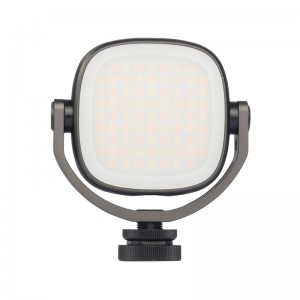Lamps that are good for eyesight include electric heating lamps, high-frequency lamps, LED desk lamps, and DC eye protection lamps.
Lighting requirements:
1. The light is continuous and uninterrupted, and there is no light and dark changes in a short period of time, and no flicker.
2. The color temperature is about 4000~4600K, the color temperature is moderate, the light is soft and slightly yellow, which is more suitable for reading needs; the color temperature is about 4700~5500K, the color temperature is high, and the light is dazzling and white. At dusk, the color temperature of sunlight is 2000K-3000K, which is too low and too yellow; at noon, the color temperature of sunlight is close to 7000K, and the color temperature is too high, too bright and too dazzling.
3. It is scattered light, with a large illuminated area and no shadows with strong contrast.
4. Continuous spectrum: a mixed light composed of a variety of visible lights in a certain proportion, non-monochromatic light.
5. Direct sunlight and natural light near the window are usually very strong (illumination value of several thousand to tens of thousands Lux), and it is not suitable to read and write for a long time under this light.
The specific introduction of the eye protection lamp:
1, electric heating lamp
The first incandescent lamp and halogen lamp (halogen lamp) are actually a kind of eye protection lamp. Because when alternating current passes through the filament, the filament heats up and emits light again. Because the filament has a heat capacity, the temperature of the filament changes little when the power supply current changes, and the brightness of the emitted light does not change as obvious as a fluorescent lamp (fluorescent lamp). In addition, incandescent lamps and halogen lamps are characterized by their continuous spectrum, which is closest to the spectral characteristics of natural light, so they are good light sources for the eyes.
Therefore, there is an eye protection lamp that uses a filament with a large heat capacity. To judge the heat capacity of the filament, you can see it intuitively: after turning on the light, the light slowly lights up, that is, the heat capacity is large; when it is turned on, the heat capacity is small. This kind of eye protection lamp that uses a filament with a large heat capacity often has two levels. The low level heating filament is turned on first, and then the high level is turned on. Normal use, using two levels to heat the filament first can effectively extend the service life.
Although ordinary incandescent lamps have good spectral characteristics, they have been listed as obsolete commodities by the country due to their low energy efficiency[1]. The filament temperature of the halogen lamp is higher, and the energy efficiency is slightly higher than that of the incandescent lamp. Because of its better color temperature, it is more widely used in car headlights, hotels, auditorium halls, and exhibition stands.
2, high frequency lamp
The alternating current of China’s power grid is 50 Hz, which changes 50 times per second. Therefore, the fluorescent lamp (fluorescent lamp) using AC power directly, the light is flickering, and the flickering frequency is 100 times per second, which is twice the frequency of the grid. The main change that the human eye can perceive is within 30 Hz. Although the alternating light and dark changes of the light 100 times per second will not be perceived by us, these flickers have an impact on the human eye. For example, when the light is bright, the pupils in the eyes will shrink; when the light is dark, the pupils will dilate. Therefore, the direct use of alternating current fluorescent lamps is harmful to the eyes.
High-frequency lamps (such as energy-saving lamps) use electronic inverters to convert 50Hz alternating current into high-frequency alternating current (usually 30k-50kHz), and then use high-frequency alternating current to light the lamp. In the high-frequency lamp, the brightness changes tens of thousands of times per second. Since the human eye can’t feel the change before it can change, it is “unchanged” and achieves the purpose of eye protection. The drive circuit of the high-frequency lamp will have an electromagnetic signal of 30-50kHz. Some people claim that this is harmful to the human body, but there is no specific report or data to prove it, and further research and verification are required.
3, LED desk lamp
Using a power adapter, the lighting is mainly used for large-scale landscape lighting, or some occasions where the light quality is not high, and it is not suitable for high-eye environments, because the blue light intensity is high and the eyes are easily damaged. Small lamp beads are easy to wear, and there is the problem of attenuation rate, which is easy to cause the entire table lamp to be scrapped. Generally, the illumination area is small and the color spectrum is relatively narrow. It is a monochromatic light source, which will cause a certain impact on the optic nerve and is relatively dazzling. However, the LED desk lamp also has its advantages, compared with the low cost of the electronic original, the price of the whole lamp is low. The color temperature of LED lights has three types: warm white (a bit yellowish, about 2700-3000k), true white (4500-6500k), and cool white (6500-12000k). Cool white LEDs are relatively harsh.
4, DC eye protection lamp
Using a DC ballast, by first converting the AC power into a DC power with stable voltage and
Post time: Jun-03-2021 BACK




